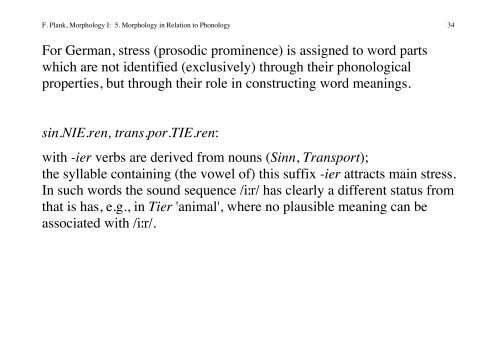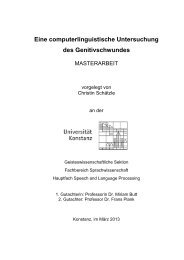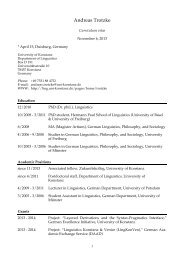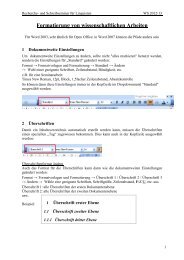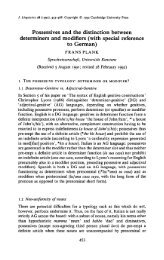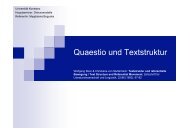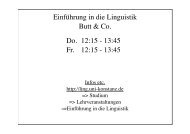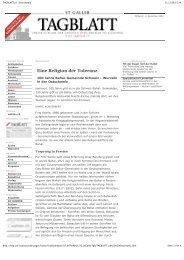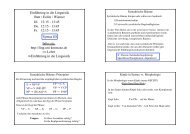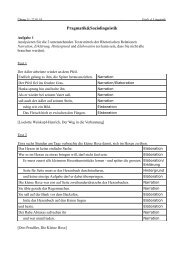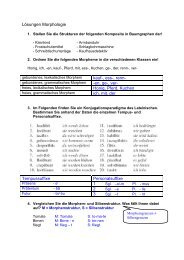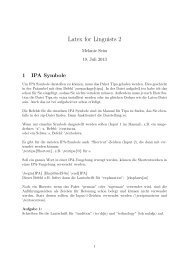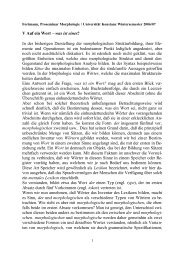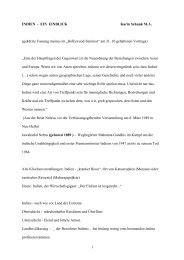5. Morphology in Relation to Phonology
5. Morphology in Relation to Phonology
5. Morphology in Relation to Phonology
Create successful ePaper yourself
Turn your PDF publications into a flip-book with our unique Google optimized e-Paper software.
F. Plank, <strong>Morphology</strong> I: <strong>5.</strong> <strong>Morphology</strong> <strong>in</strong> <strong>Relation</strong> <strong>to</strong> <strong>Phonology</strong> 34<br />
For German, stress (prosodic prom<strong>in</strong>ence) is assigned <strong>to</strong> word parts<br />
which are not identified (exclusively) through their phonological<br />
properties, but through their role <strong>in</strong> construct<strong>in</strong>g word mean<strong>in</strong>gs.<br />
s<strong>in</strong>.NIE.ren, trans.por.TIE.ren:<br />
with -ier verbs are derived from nouns (S<strong>in</strong>n, Transport);<br />
the syllable conta<strong>in</strong><strong>in</strong>g (the vowel of) this suffix -ier attracts ma<strong>in</strong> stress.<br />
In such words the sound sequence /i…r/ has clearly a different status from<br />
that is has, e.g., <strong>in</strong> Tier 'animal', where no plausible mean<strong>in</strong>g can be<br />
associated with /i…r/.


